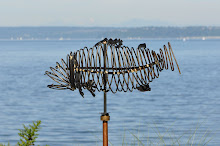"Come, little leaves"
said the Wind one day;
"Come to the meadows with me and play.
Put on your dresses of red and gold;
for summer is past and the days grow cold."
When we were ready to go back to town in September, reversing the process that brought us over was a mad scramble for us to find shoes and clothing to wear back to the City because we had lived as natives with a pair of pants and no shoes all Summer
Mr. Lillico brought his tug and everything was rowed out from the shore and put on the the tug Mr. Murray rowed the last boatload out. He took our tents and flies, which, of course, had all been folded up, put them on his horse and wagon , took the row boat and stored it away and stored the tents in his barn
and the summer was over.

































